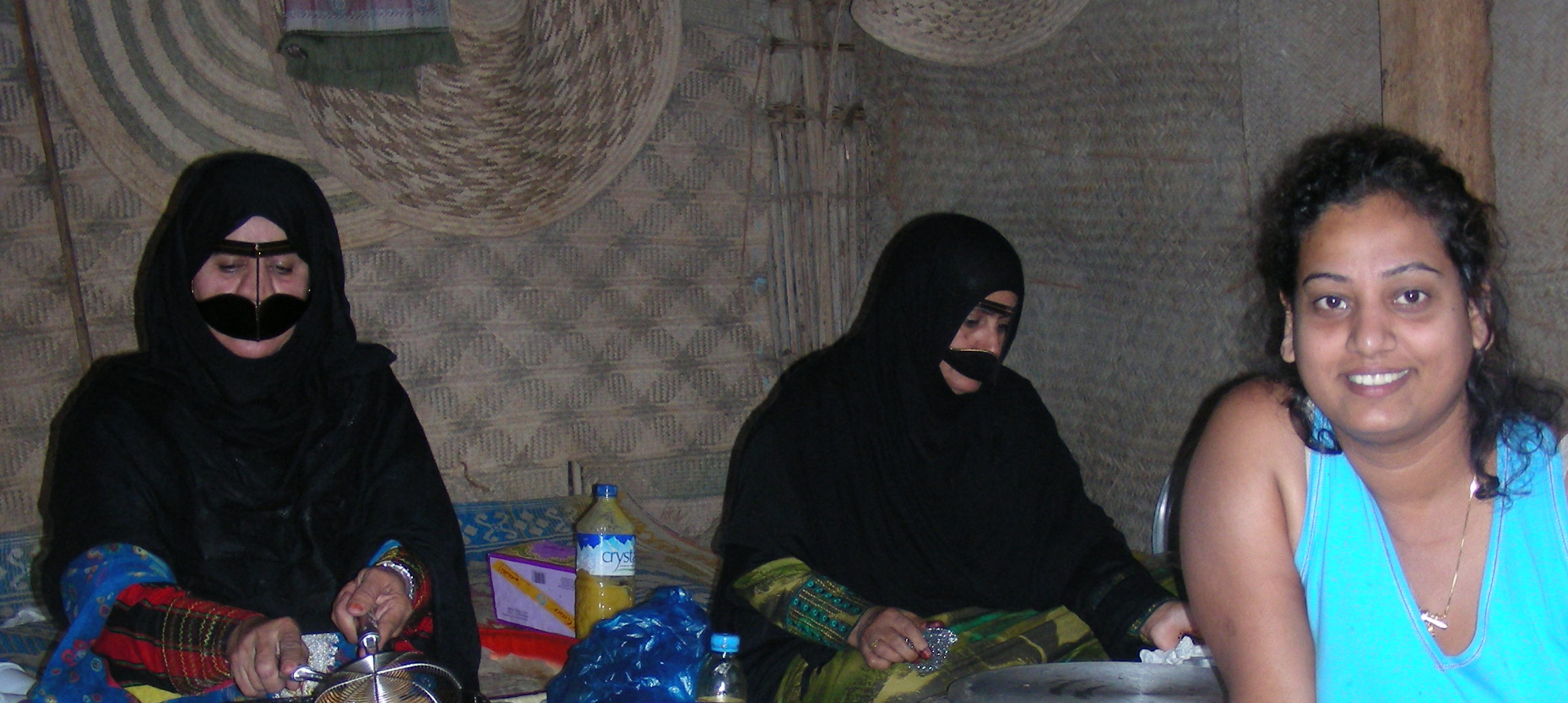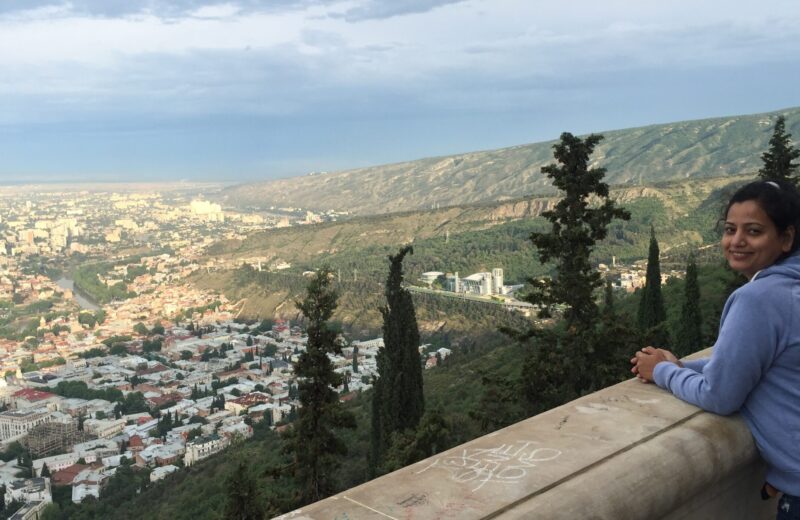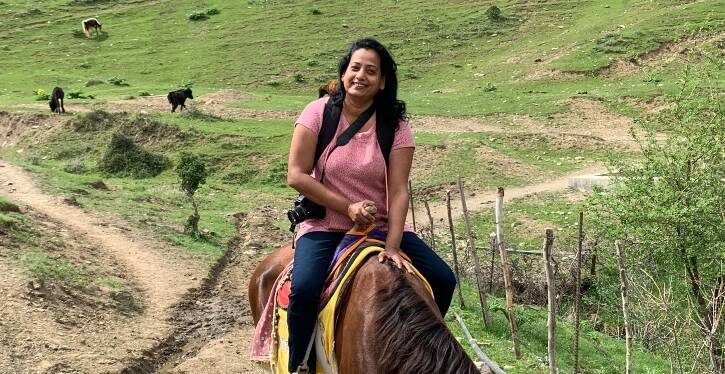When people speak of Uzbekistan, their mind go to the awe-inspiring Islamic architecture of the Registan in Samarkand or the Kalon Minaret in Bukhara or the walled city of Khiva, which is quite unfortunate, because the country’s capital city, Tashkent is just as amazing.
Country: Uzbekistan
Capital: Tashkent
Language spoken: Uzbek
Population:
Currency: Uzbekistan Som (UZS)
I would recommend spending at least one night in Tashkent, longer if you have the time. I believe that there is so much to learn in the capital city. Tashkent is a good starter.
The following handy guide will help you see the city and its highlights in 24-48 hours and include where to eat, what to eat and what to see.
A little about Uzbekistan
Uzbekistan is landlocked and lies between two major rivers, the Syr Darya and Amu Darya. It is bordered by Kazakhstan, Kyrgystan, Tajikistan, Turkmenistan, and Afghanistan. The autonomous republic of Karakalpakstan is in the western third of the country. Uzbekistan declared its independence from the Soviet Union on August 31, 1991, with Tashkent as its capital.
What to see in Tashkent
Chorsu Bazaar: Located in the Old Town, Chorsu Bazaar is famous for its blue dome and a bustling market. Chorsu translates to “confluence”. It existed continuously since the Mongol invasion, but the blue dome was built after the earthquake of 1966, blending beautifully with the Central Asian architecture. The inner part of the bazaar is filled with fruit, meat and fish vendors and is, in fact one of the best places to witness the daily life of a local.
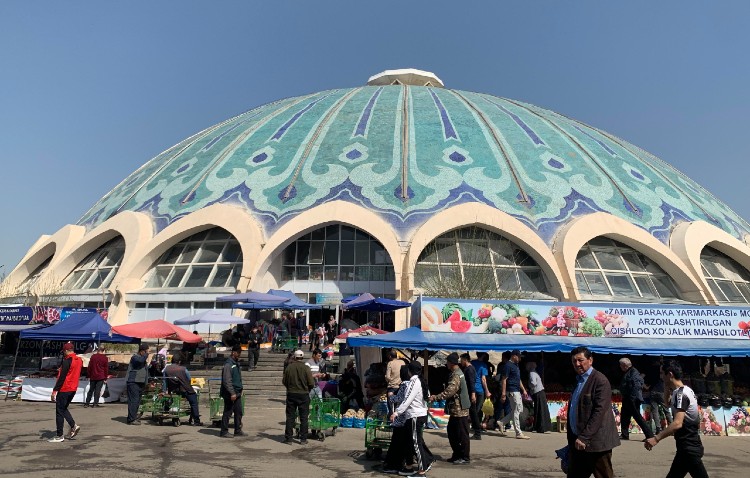
As you continue towards the Ko’kaldosh Madrasasi (Kukeldash Madrasah) you’ll pass little stalls selling clothing, fresh bread, jewelry, beauty products, and more. (Nearest metro – Chorsu on the Blue Line)
Kukeldash Madrasah: Located next to Chorsu Bazaar is the Hoja Ahror Valiy Mosque & Kukeldash Madrasah. Since they are located that close to the bazaar, pay them a short visit.
The construction of the Kukeldash Madrasah goes back to 16th century. This building lost its original function in the subsequent years and served as a caravanserai for many years. With time, it deteriorated (thanks to the many earthquakes) and pretty much became a ruin in the 19th century. However, it was later reconstructed to its current form today. (Nearest metro – Chorsu on the Blue Line)
Museum of Victims of Political Repression: About fifteen minutes’ walk from Bodomzur metro station is the Museum of Victims of Political Repression. The place is a memorial complex dedicated to the people who thought for the independence of Uzbekistan.
Tashkent Tower: The Tashkent Tower is the 11th tallest tower in the world and resembles a spacecraft ready to launch. The entire structure stands 1,230 feet high, and the observation deck is 328 feet above the ground. You’ll get off the elevator on the 6th floor for the observation deck, or you can continue to the 7th floor to have a beer in the revolving restaurant. (Nearest metro Bodomzur on the Blue line)
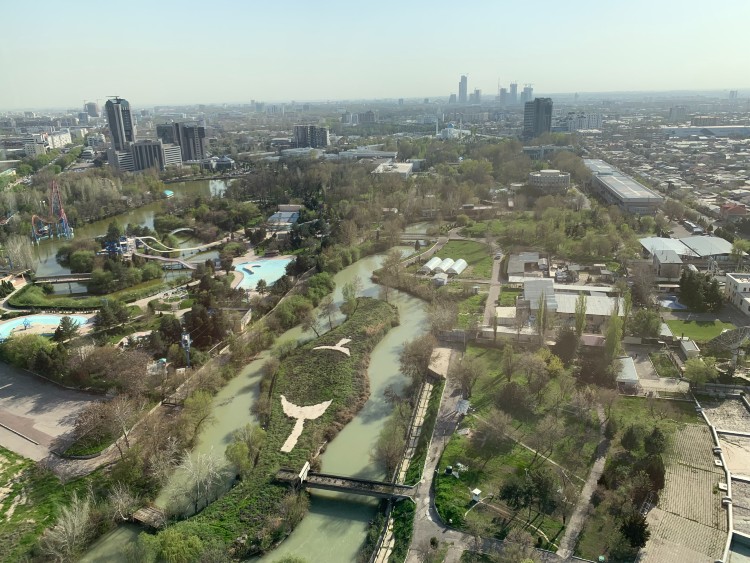
Beshqazon Plov Centre: This Central Asian Plov centre is best visited to enjoy a delicious local cuisine. It is one of the highlights of visiting Tashkent. Here, the plov is cooked in giant cauldrons over wood fire and then scooped onto the plates. Arrive early to secure a spot. The restaurant seats over a 1000 and it is usually packed to capacity. (Nearest metro Bodomzur on the Blue line, in the same direction as Tashkent TV Tower.)
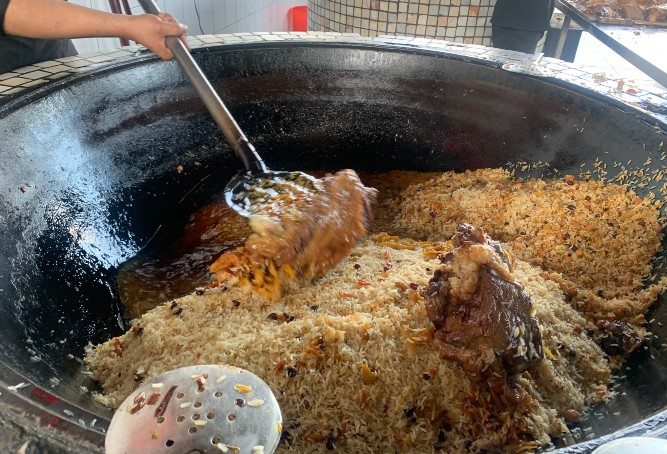
Uzbekistan Hotel: This hotel is almost a landmark and can be found next to the Amir Timur square. The Square is a lush green space with fountains and flowers and on one side is the famous hotel towering over everything else in the vicinity. The city’s most important buildings, both political and cultural, are concentrated on the square and in the immediate vicinity.In the centre of the square is the statue of Tamerlane on horseback.
The Square has an interesting history. It was first designed in 1870 by Imperial Russian architects as a central park of the new Tashkent and was called Constantine Square. Later, the main monument in the center of the square was changed several times. In 1993, the statue of Tamerlane was installed.
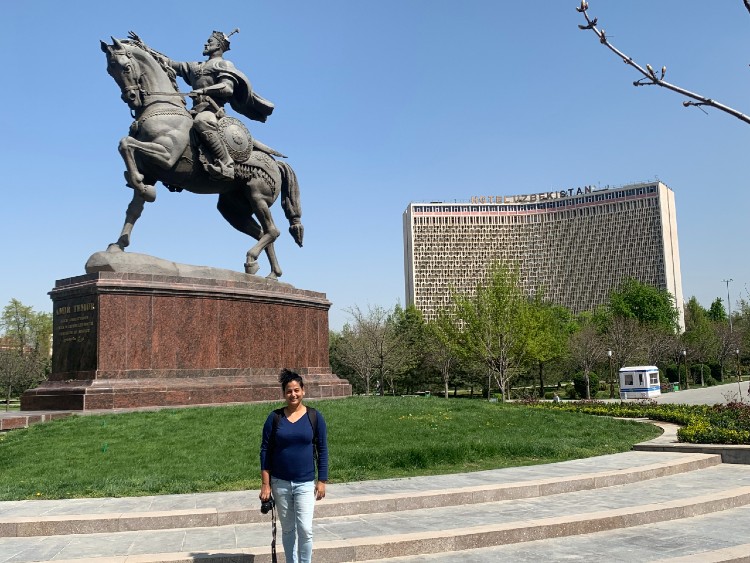

Tashkent food guide
Traditional Uzbek food is delicious with influences from all over Asia and Middle East. The country shares its culinary tradition with Turkey as well as serving up a wide number of noodle and dumpling dishes that bear a close resemblance to their counterparts in China, Nepal, and other Eastern Asian countries.
Here, food is rich in meat, especially beef and lamb. However, Tashkent being the capital city has a great food scene and besides the local food mentioned below, it is easy to find international food quite easily. It also has a vibrant coffee scene.
Plov: Easily the country’s national cuisine and a must try food in Uzbekistan. Comprising rice, onion, carrots and meat (beef or lamb) and often served with slices of horse meat, egg. Cooked in large cauldrons called Kazans, plov takes centrestage in all Uzbek homes and restaurants.
Shashlik: Skewered meat cooked on the grill. The word ‘shashlik,’ is just the Russian word for ‘shish kabob,’ and this style of cooking became popular in Central Asia during the Russian empire. Uzbeks love their shashlik and anything including cubes of beef or lamb, chicken legs, meat rolls (pinwheel of lean and fatty beef, and ground beef (or lamb) can go on the grill.
*Most Uzbeks are Muslim, so finding pork on the menu is out of question. But if you’re lucky you might be offered some shashlik made with horse meat. Vegetarian shashlik can be found too – these include grilled skewers of potatoes, mushrooms, tomatoes, and peppers.
Lagman: Another extremely popular food in Uzbekistan. There are several ways to eat lagman – it can be served as noodle stew with lamb and vegetables and spiced with cumin or stir-fried (pan fried) with onions, or any other pantry vegetables. (think spaghetti). It can sometimes come with a fried egg on top. The word ‘Lagman’ comes from the Dungan word lyumyan which means to “stretch the dough”, and Lagman noodles are typically hand-pulled, giving them a deliciously chewy texture.
If in doubt, always order lagman. You can never go wrong with that!
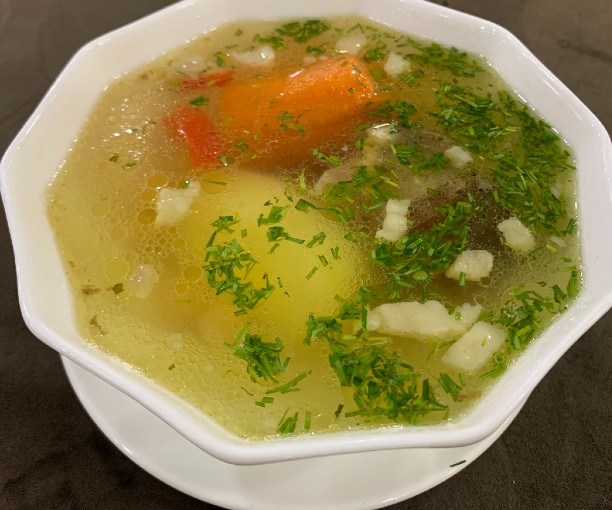
Shurpa: A lamb soup that can be found almost anywhere in the country. It comes with chunks of lamb and thick slices of vegetables (carrots, potatos or onions) and garnished with dill or parsley.
Dimlama: A one-pot stew (popular during harvest season), dimlama is made of meat (lamb or beef), potatoes, onions, carrots, cabbage, peppers, and garlic, layered in a deep pot and cooked for many hours.
Manti: Another extremely popular food, manti is steamed dumplings filled with ground lamb or beef. Extra fat is often added to the dumplings to enhance the flavor. Chuchvara are simply smaller versions and can be added to soups or served fried.
Samsa: Also, somsa or samosa is another popular style of dumplings in Uzbekistan. Like manti, they are filled with lamb or beef (and potatoes) and baked in an oven (tandir), resulting in a flaky pastry that is a staple breakfast food in Uzbekistan.
Tukhumbarak: Sort of dumpling filled with a mixture of eggs and milk or a bit of fried onion and steamed. Often served with yogurt. This can also be found with a pumpkin filling.
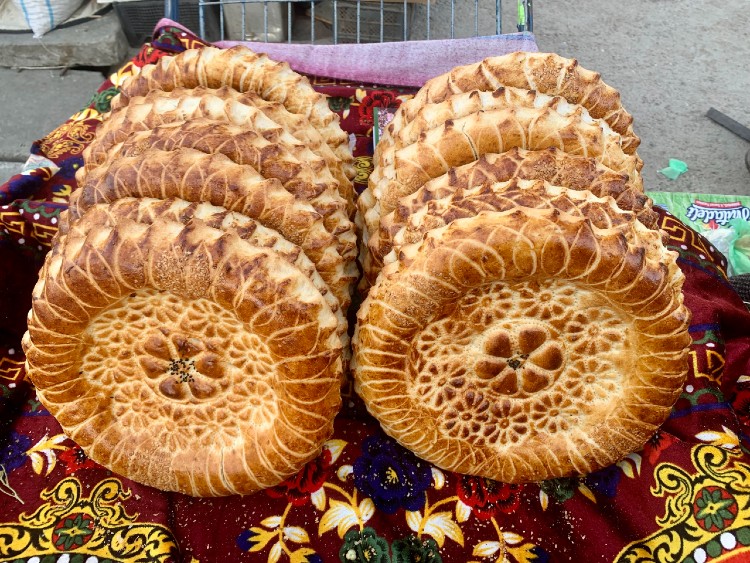
Bread: This is the most important (or default) item on the menu. All over the country, it is very common to find people selling homemade bread with unique patterns in them.
***A variety of bread stamps are available in the markets. They are intricately designed metal pins inlaid in wooden handles.
Click here for vegetarian food guide
Tashkent Metro Stations
Now, this might sound incredible, but one of the highlights of Tashkent is its metro stations. To begin with, the metro system in Tashkent is reliable, efficient, and very cheap but alongside that, the metro stations are a work of art. Each station is unique and features some architectural gems. Some even have huge chandeliers (like a Russian ballroom), but every station reflects the history of Uzbekistan and tells a story through its murals, portraits, or plaques.
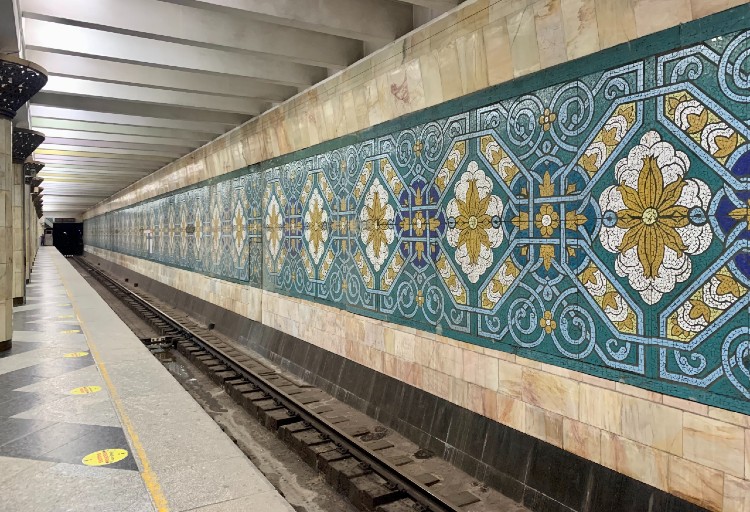
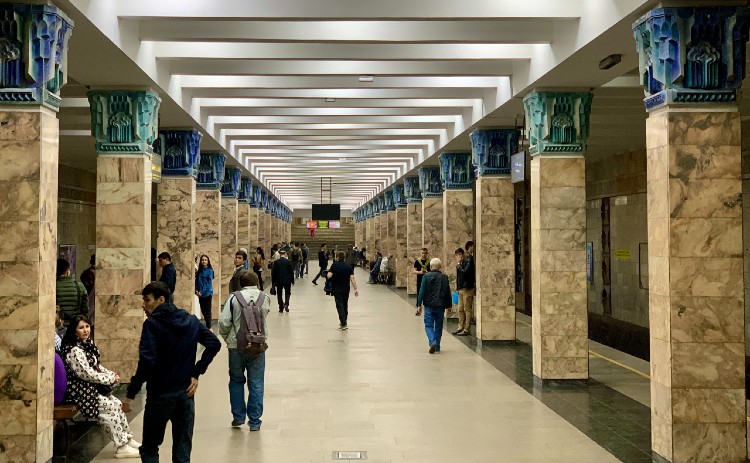
So, if you want to admire the beauty of the metro stations, hop on the metro, and explore to your heart’s content. On the flipside, metro tickets are very cheap, so you won’t burn a hole in your pocket.
***When the metro was constructed, it also functioned as a bomb shelter for the citizens of Tashkent in the event of a nuclear attack. Until 2017, one couldn’t take pictures of the metro. Only in 2018, this ban was lifted.
The Tashkent Metro is open every day from 5am until midnight. Peak hours are from 7.30 am until 9.30 am and from 5 pm until 7.30 pm.
The red line is called the Chilonzor Line and it was the very first line of the Tashkent Metro, with 17 stations.
To buy a ticket, head to the ticket office at the entrance of every station. You will see the word Kassa indicated on a yellow panel.
Below, you can find a map of the Tashkent Metro Stations.
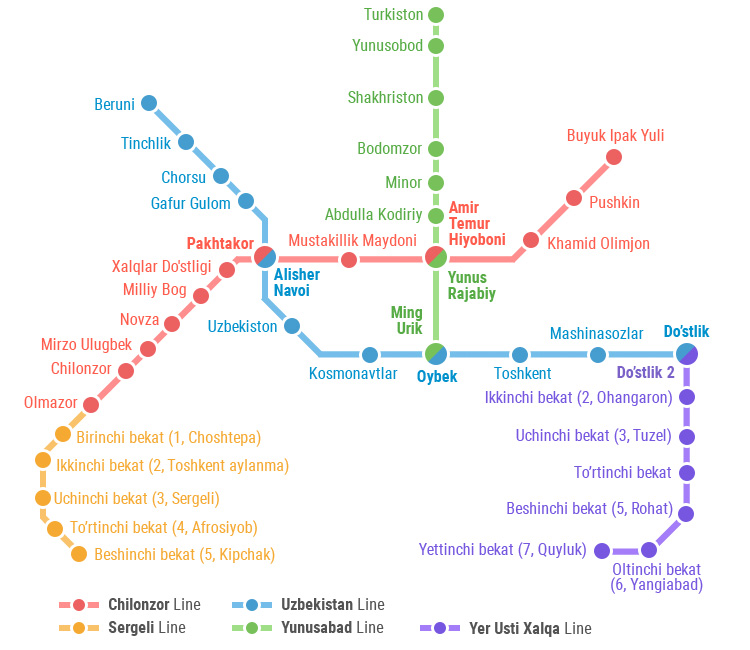
Did you know?
- Tashkent is also part of the Silk Route.
- Tashkent is the home of the first underground transport system in Central Asia.
- It was the only city in Central Asia with a Metro until Almaty got one in 2011.
- Many of the Soviet-era stations have stucco designs and chandelier-like lighting and look more like ballrooms than stations.
- The city’s many theatres (both Uzbek and Russian), include the Navoi Theatre of Opera and Ballet. There are also a Palace of the Arts and several museums, parks, and stadiums.
Is Tashkent worth visiting?
Finally, the big question. Is Tashkent worth visiting? The answer to that could be found hidden in the above article. Whether you should come for a day or stay longer depends on how much time you have or how much you are willing to invest in knowing an ancient culture.
In short, Tashkent is worth a visit or two and requires and absolute open mind and the willingness to accept it for it is. Like all capital cities, it suffers from population, traffic snarls and noise but there are ways to get around that and see the city for what it really offers.
My definitive answer is a YES. It is totally worth visiting.
Know before you go
- The currency of Uzbekistan is the Uzbekistani Som, also Soum. (UZS). Prices mentioned in the article are in Som. At the time of writing, the conversion was 8,450 UZS to $1 USD (check XE.com for the latest exchange rates). It is the only means of payment in the country. The banknotes are available in denomination of 5000, 1000, 500, 200 and 100.
- Exchange cash at the airport for immediate use. (there are three ATMs at the airport, but they can sometimes stop working). Theere are several options of exchanging cash in the city.
- Uzbekistan is not as conservative as you might be led to believe. However, it is required (or appreciated) if you cover up when visiting religious sites.
- Tipping is not common, in fact, most taxi drivers round up the fare.
- Islam Karimov Tashkent International Airport is in Tashkent, and you’ll likely need to fly into and out of it. It is possible to fly within the country, but most international flights arrive at Islam Karimov Airport.
Getting Around
Public transportation includes taxis, metro, and buses. Taxis are cheap (1,000 UZS per kilometer). It is advisable to download the YANDEX app.
The metro will also get you where you need to go for a very small sum (1,000 Som per trip). Keep in mind that no signs are in English and no announcements either, so it would be very important to listen closely or write down the names of the stations.
Trains in Uzbekistan are fast, convenient, and comfortable. The train from Tashkent to Samarkhand takes a little over two hours while the slow train will bring you there in three hours.


